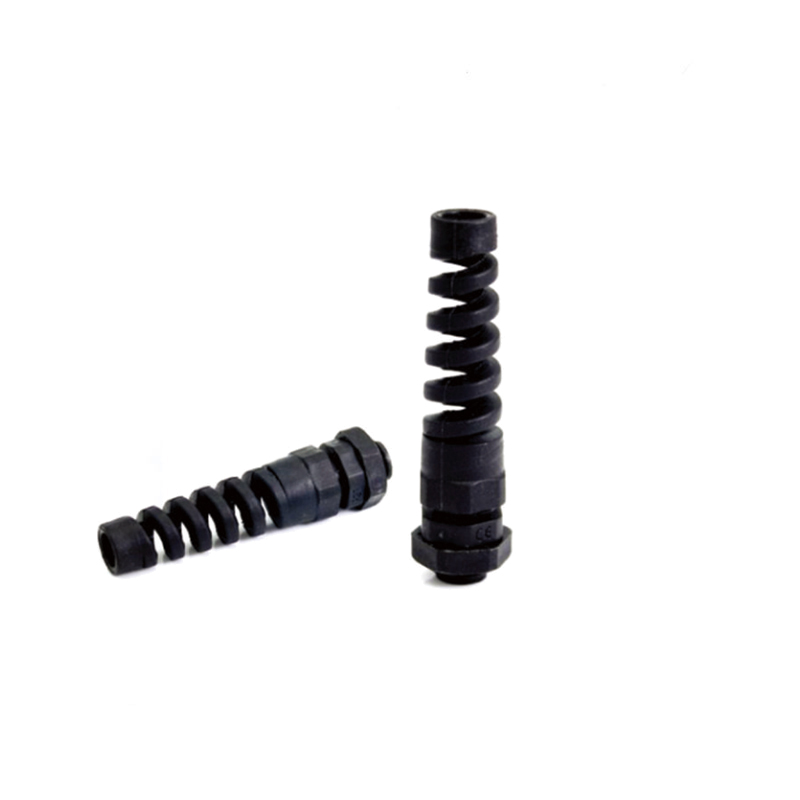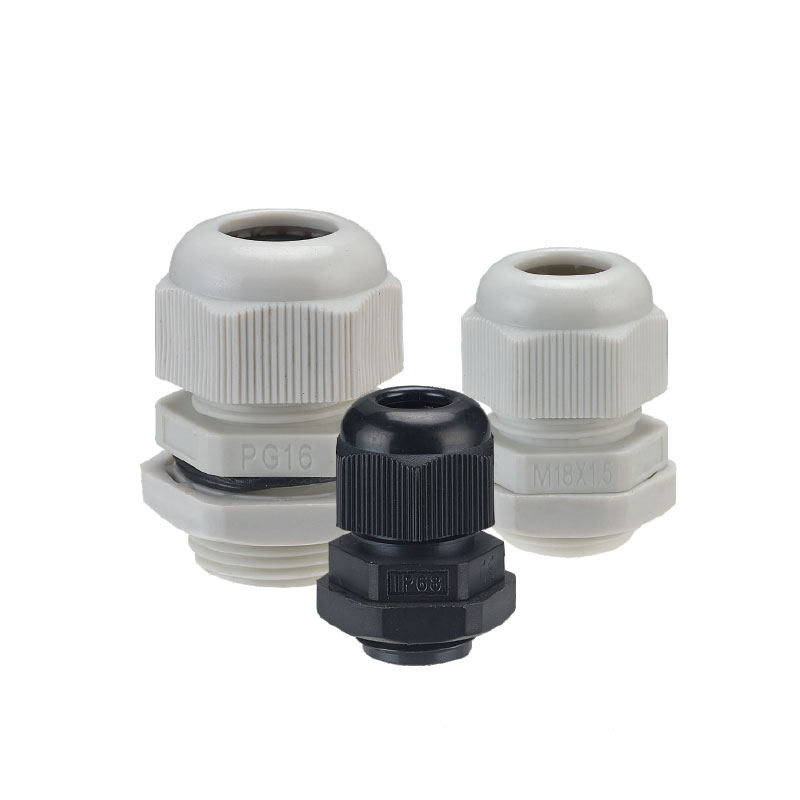
Waterproof Cable Gland vs Explosion-Proof Difference
In industrial and construction projects, Waterproof Cable Gland are essential components that ensure the safety and stable operation of cables. Whether facing rain and dust in outdoor environments or dealing with explosive hazards in dangerous areas, choosing the right cable gland is crucial. Today, let’s explore two common types of cable glands—waterproof cable glands and explosion-proof cable glands. What are their differences, and which one suits your project better? Let’s dive in.
What Is a Waterproof Cable Gland?
A waterproof cable gland mainly prevents water and dust from entering cable connections, protecting cables and equipment. As the name suggests, it focuses on the “waterproof” function. It is commonly used in outdoor or humid environments such as construction sites, outdoor equipment, and underground pipelines. Typical materials include plastic and nylon, known for being lightweight and corrosion-resistant, which is ideal for everyday protection.
Its protection rating is often IP68, meaning it can withstand prolonged submersion in water.
| Feature | Description |
|---|---|
| Material | Plastic, Nylon |
| Protection Level | IP68 or below |
| Suitable Environment | Outdoor, humid, dusty |
| Main Function | Waterproof, dustproof |
| Applicable Industries | General industry, construction, telecommunications |
Waterproof cable glands are easy to install and generally more cost-effective, perfect for places where waterproofing is needed but there is no explosion risk.
What Is an Explosion-Proof Cable Gland?
If a waterproof cable gland is like a “raincoat” for cables, an explosion-proof cable gland is their “armor.” It is specially designed for hazardous environments such as oil refineries, chemical plants, and mines, effectively preventing sparks and explosions caused by cables. Explosion-proof cable glands are usually made of metal such as stainless steel, brass, or carbon steel, offering durability and resistance to corrosion and high temperatures.
| Feature | Description |
|---|---|
| Material | Stainless steel, carbon steel, brass |
| Certification | 3C certification, explosion-proof certificates |
| Suitable Environment | Oil, chemical, mining, explosive areas |
| Main Function | Waterproof, dustproof, explosion-proof |
| Applicable Industries | High-risk industrial environments |
Explosion-proof glands comply with strict safety standards to maximize security even in extreme conditions.
Four Core Differences Between Waterproof and Explosion-Proof Cable Glands
| Difference | Waterproof Cable Gland | Explosion-Proof Cable Gland |
|---|---|---|
| Material | Mainly plastic or nylon | Mainly metal (stainless steel, brass) |
| Function | Waterproof and dustproof | Waterproof, dustproof, and explosion-proof |
| Certification | Usually no explosion-proof certification | Must have explosion-proof certification |
| Application | General industrial, construction, telecom | Hazardous explosive areas like chemical and oil |
Clearly, your choice depends on your environment and safety needs.
Key Performance Elements of Waterproof Cable Glands
- Sealing Performance: The seals and locking structure must prevent water and dust ingress, especially in rainy or dusty environments.
- Weather Resistance: High-quality glands resist UV rays and temperature changes for long-term durability.
- Ease of Installation: Standard threaded design allows easy installation and maintenance.
- Compatibility: Available in various sizes to fit different cable diameters.
| Key Aspect | Details |
|---|---|
| Sealing Structure | Rubber seals, waterproof rating up to IP68 |
| Material Durability | UV-resistant, anti-aging plastic or nylon |
| Installation | Standard threaded for easy assembly |
| Cable Size Compatibility | Supports diverse cable diameters |

Find the perfect Waterproof Cable Gland for your project today.Protect your cables with certified waterproof and explosion-proof glands.
Key Technical Features of Explosion-Proof Cable Glands
Explosion-proof glands come with critical features, including:
- Flameproof Design: Prevents sparks or heat from causing external explosions.
- Corrosion and High-Temperature Resistance: Suitable for harsh environments.
- Multiple Thread Standards: Meets domestic and international market needs.
- Safety Assurance: Certified by professional authorities for safe operation.
| Technical Feature | Description |
|---|---|
| Flameproof Structure | Tight sealing to block sparks |
| Corrosion Resistance | Metal surface treated to prevent corrosion |
| High-Temperature Resistance | Stable under extreme heat |
| Certification | Complies with IECEx, ATEX, and other standards |
How to Choose the Right Cable Gland?
When selecting a cable gland, consider:
- Environment Risk: Is there an explosion risk? Choose explosion-proof if yes; waterproof is sufficient for other cases.
- Material Requirements: Is plastic enough or is metal needed for corrosion resistance?
- Certification: Is safety certification required?
- Installation and Maintenance: Easy installation lowers usage costs.
- Budget: Explosion-proof glands cost more, purchase accordingly.
| Factor | Waterproof Cable Gland | Explosion-Proof Cable Gland |
|---|---|---|
| Environment | Outdoor, humid, dusty | Hazardous, explosive |
| Material | Plastic, Nylon | Stainless steel, carbon steel |
| Installation | Standard installation | Strict compliance needed |
| Certification | No explosion-proof certification needed | Must have explosion-proof certification |
| Budget | Economical | Higher cost |
Choosing the right cable gland not only ensures equipment safety but also protects lives and property. If you need customized waterproof or explosion-proof cable gland solutions for your projects, contact us today! Our expert team is ready to assist you in securing every cable connection.
FAQ
1. Where are waterproof cable glands suitable for use?
Waterproof cable glands are ideal for outdoor humid environments, construction sites, telecom base stations, and other places needing dust and water protection but no explosion risk.
2. What certifications do explosion-proof cable glands have, and why are they important?
Common certifications include 3C, IECEx, and ATEX, which prove that the products have passed rigorous testing to ensure safety in explosive environments.
3. Can waterproof and explosion-proof cable glands be used interchangeably?
Generally, no. Explosion-proof glands have stricter design and materials to meet safety requirements, making waterproof glands unsuitable in hazardous conditions.
4. How can I check the waterproof rating of a cable gland?
Check the IP rating on the product, such as IP68 indicating dustproof and long-term waterproofing. Always look at technical specs from the manufacturer.
5. What should I be careful about when installing a waterproof cable gland?
Ensure the seal is intact, tighten properly to avoid moisture ingress, and install according to guidelines to extend product life.








